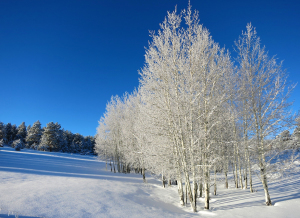Compiled by Elliot Jackson
The Big Game!
In addition to deer and elk, there are five other species of big game animals for which you can get hunting tags in Colorado, according to the Department of Natural Resources:
Bighorn Sheep – The estimated in-state population is about 6,900.
Mountain Goats were imported to the state in the 1940s. Their established “areas” include territory in Central Colorado: the Raggeds Wilderness near Gunnison, and the Collegiate Peaks west of Buena Vista. The estimated population is about 1,600.
Black Bears – The estimated population is 16,000 – 18,000. The difficulty of obtaining a hunting license for bear depends on the region, the season, and the specific game management unit.
Mountain Lions – The estimated population 3,000 – 7,000. Lions are usually hunted after snowfall during the season, which is November to March, and dogs are used to track the lion’s scent and chase it into the trees.
Moose were introduced to Colorado in the late 1970s. The moose population is about 2,300, concentrated in the North Park area, on the Grand Mesa, Taylor Park northeast of Gunnison, the La Garita Mountains, and the upper Rio Grande River drainage.
Hare Today
There are six native species of rabbits and hares in Colorado:
• Desert Cottontail
• Eastern Cottontail
• Mountain Cottontail
• Snowshoe Hare
• Black-tailed Jackrabbit
• White-sided Jackrabbit
(As of this writing, the Jackalope’s native status remains TBD.)
The Falcon Hunters
Did you know you can hunt small game in Colorado with a hawk or falcon? According to Don McKnight of the High Plains Falconers, there are different game types for different birds of prey, and two different ways to fly a hawk or falcon:
• Austringer refers to flying off a fist or perch, and
requires the hunter, or a dog, to walk along to flush
the game (rabbits or pheasants).
• Longwinging refers to allowing the hawks to fly from
altitudes of 500-2500 feet, coming at their prey from
above, with dogs used either to flush or point at the
game.
• Redtails or Goshawks can be used during small
game season (September to March) to hunt rabbits
and pheasants.
• Falcons can be used during duck season to take
water birds.
Field Trials
The High Plains Falconers are the only falconry group in the United States to hold field trials for three-member hunting teams: hunter, dog and raptor. They are open to the public and are held outside of Keenesburg, west of Fort Morgan. HPF also has a website: highplainsfalconers.com.
Speaking of unusual methods of varmint hunting, did you know the sport of fox-hunting (or coyote-hunting, in these parts) with horses and hounds, is alive and well in Colorado? There are several hunts statewide, including Central Colorado’s own Headwater Hounds, based in Salida! Quarry for “fox-hunting” includes not only foxes and coyotes but also, in some areas, bobcat and even wild pig or boar, according to the Masters of Foxhounds Association (MFHA).
Cow Facts!
• Total number of cows in Colorado: 2,480,000 in
2014 (down from 2,600,000 in 2013). Most of these
are beef cattle. According to coloradomilk.com, there
are about 145,000 milk cows in the state.
• The total human population in Colorado is 5,348,476
as of 2014, which adds up to 2.16 residents per cow.
• You are far more likely to be killed by a cow or
horse than a shark, rattlesnake, spider or stinging
insect, according to the Center for Disease Control
and Prevention (CDC).
• The National Western Stock Show, hosted in
Denver, begin in 1906 and averages about 650,000
visitors per year.
• Like the rest of the U.S., American Angus are the
most popular purebred cattle currently being raised.
• Colorado is the fourth largest exporter of fresh and
frozen beef in the United States. g
Dawgs
What is the most popular dog breed in Colorado? The Labrador Retriever wins that distinction (according to both HuffPo and The Denver Post).

